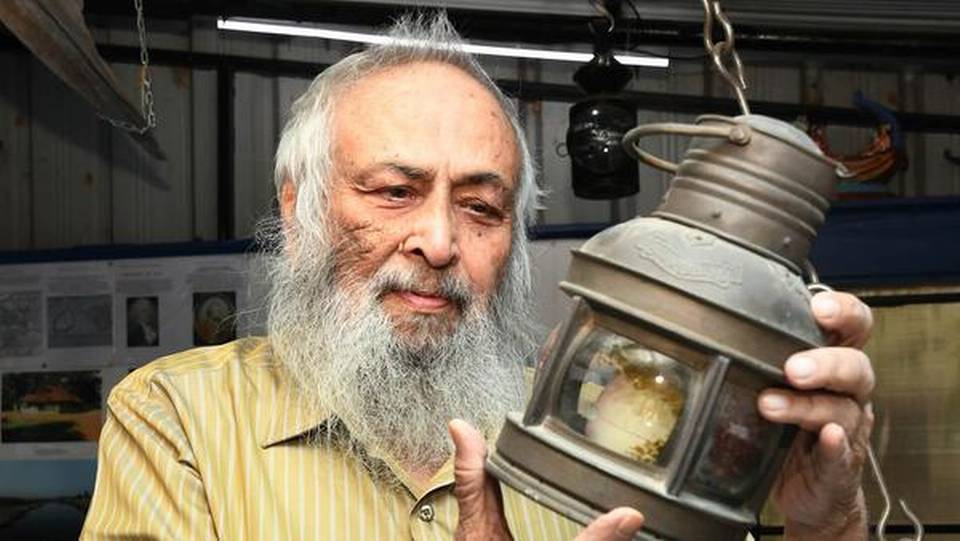
Through years of travel, D Hemachandra Rao has collected enough items to start Chennai’s first Maritime Heritage Museum, right in his house
At the turn of this decade, Tamil Nadu Tourism Development Corporation had plans to make the decommissioned INS Vagli submarine, gifted to the State Government by the Indian Navy, the centrepiece of a maritime heritage museum in Mamallapuram. This dream was never actualised, but in the busy neighbourhood of Virugambakkam, one man took matters in his own hands: D Hemachandra Rao converted his house into Maritime Heritage Museum, replete with brass ship models, dhow models, compasses, anchors, coins with ships engraved on them, and postcards and stamps of India’s lighthouses and canals.
Fondly called the Lighthouse Man, the 80-year-old civil engineer, has been taking road trips for the past decade, first exploring Madras, and then along India’s coastline. His fame among the city’s history buffs led many of them to his house, asking for help with their research.
“One of them was under the impression that the Buckingham Canal originated not in Madras, but in Andhra Pradesh. That alone prompted me to start this museum; I felt there is a lot of misinformation about our maritime history floating around,” he says.
On his trips to both the Indian coast as well as the Tamil Nadu Archives, he documented lighthouses, sculptures on shore temples, arch bridges of the city, and its canals. It is his findings and souvenirs from these trips that now decorate his house-turned-museum.
Enter, blue
As you walk into the museum, even before you set your eyes on the display, you feel a gradual immersion into maritime history — the walls are painted a deep blue, and instead of the air-conditioned atmospheres of museums, the rooms smell like earth and all things old.
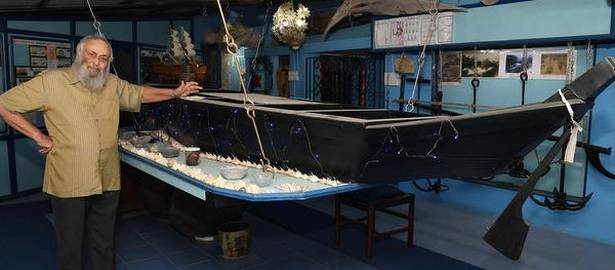
Pride of place belongs to a 16-foot wooden boat, a replica of the ones that plied on the Buckingham Canal in the 1870s. “The boats would be 80 feet long and carry upto 20 tonnes of goods,” says Rao. The board next to the model informs us that this was in regulation with the Ferries Act of 1870.
Rao has travelled thrice along the length of the canal, from Marakkanam to Peddaganjam in Andhra Pradesh. “The first was in 2008, but I could only go up to Ennore: at that time there was no way to cross the lake,” he says. Once the creek got its bridge in 2014, he once again set out to trace the path of the canal. “The canal goes through a rough terrain, and if I find it difficult today, imagine how people dug the canal in 1802: they must have crossed jungles.” He went along National Highway 5, and traversed whatever road took him eastward towards the canal.
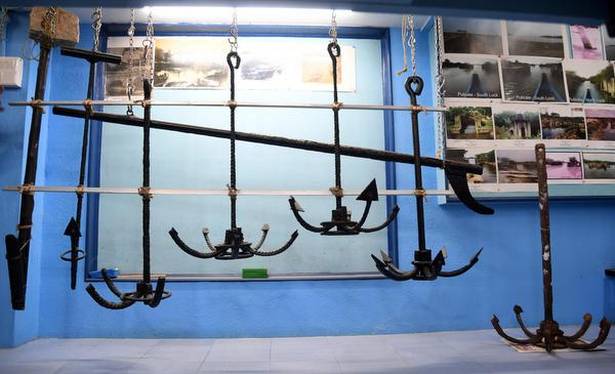
“In Andhra, we were in areas where GPS wouldn’t work. We traced it with the help of villagers who knew it as uppa kava. Finally we reached Peddaganjam, where this canal meets the Krishna Water Canal. It’s an engineering marvel! Buckingham Canal is seven feet below Krishna Canal, so they had to use a lift lock (a contraption that raises and lowers watercraft).” All this information is displayed around the room, with the help of maps and pictures.
In one section, a set of anchors and weights hang from bars, and from the ceiling hang whale bones he found in Pulicat.
A lifetime of ships
The ‘living room’ for most is just an expression, but Rao gives it a more literal sense. “This is my whole world,” he says, pointing to the four walls that enclose his bed, television, one giant swing and a lifetime collection of ship and boat memorabilia.
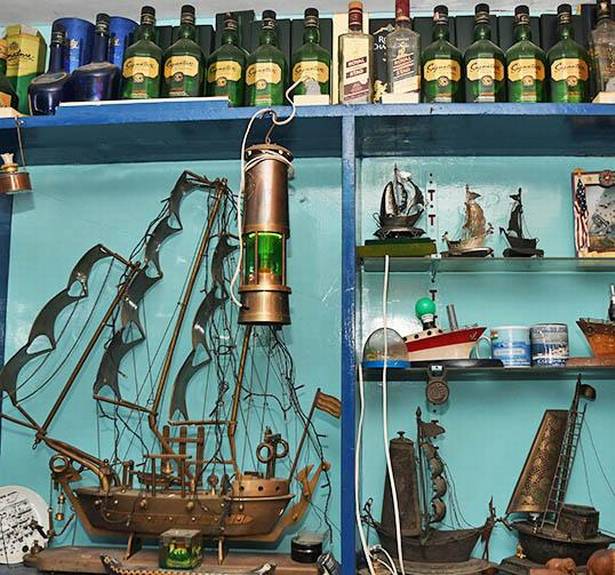
Models of brass ships, wooden houseboats, dhows from Calicut, decorative table light bulbs in the shape of ships, boat lamps from Bhavnagar, Gujarat, and antique ship-shaped liquor bottles from Goa close in on visitors, while four colourful ship lanterns stare them down. One wall is filled with magnetic ship compasses and clocks.
The collection overflows: from living room to the dining hall with an adjoining kitchen. We cross a large seaweed, framed artistically, rows of folders containing stamps, banknotes and postcards of lighthouses, warships and submarines. “I donated one set to the Indian Navy in Jamnagar last year,” he says. His collection of coins with ships on their heads, from countries such as the British West Indies and French Polynesia, sit beside a collection of cup noodles. “I don’t like throwing anything out,” he shrugs.

Once the summer abates, in July, he will be going once again to Goa, in search of temple sculptures that feature deities on boats. He has documented a few — the Mahisasuramadhani from his visit last time to Guleli village — and is on the hunt for more.
Since 2015, Rao has been travelling across the coast of India, from lighthouse to lighthouse. “Some people ask me, why don’t I visit temples on the way? But lighthouses are my only purpose, they are my pilgrimage.” And his souvenir? “The lighthouse caretakers’ autographs,” he winks.
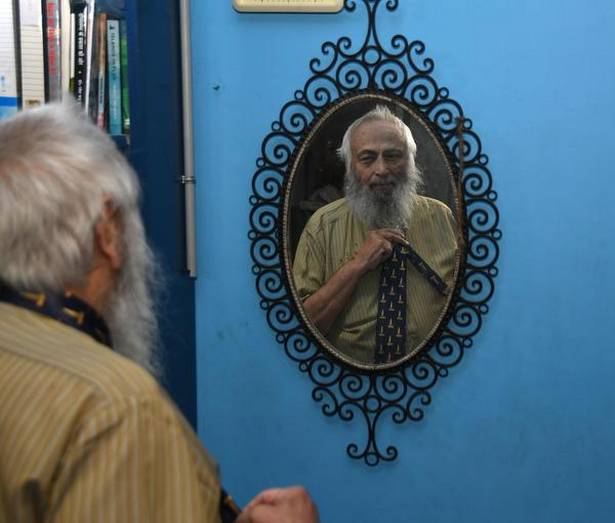
The Directorate Of Lighthouses And Lightships has recognised his efforts and gifted him five ties. But, the man who can spout facts from the 1800s admits, “I don’t quite remember how to tie a tie.”
Maritime Heritage Museum in Elango Nagar, Virugambakkam, is open from 10 am to 1 pm and 4.30 pm to 6 pm. Contact 9840870172.
Article Credit: The Hindu

Considerably, this post is really the sweetest on this notable topic. I harmonise with your conclusions and will thirstily look forward to your incoming updates. Saying thanks will not just be sufficient, for the phenomenal clarity in your writing.